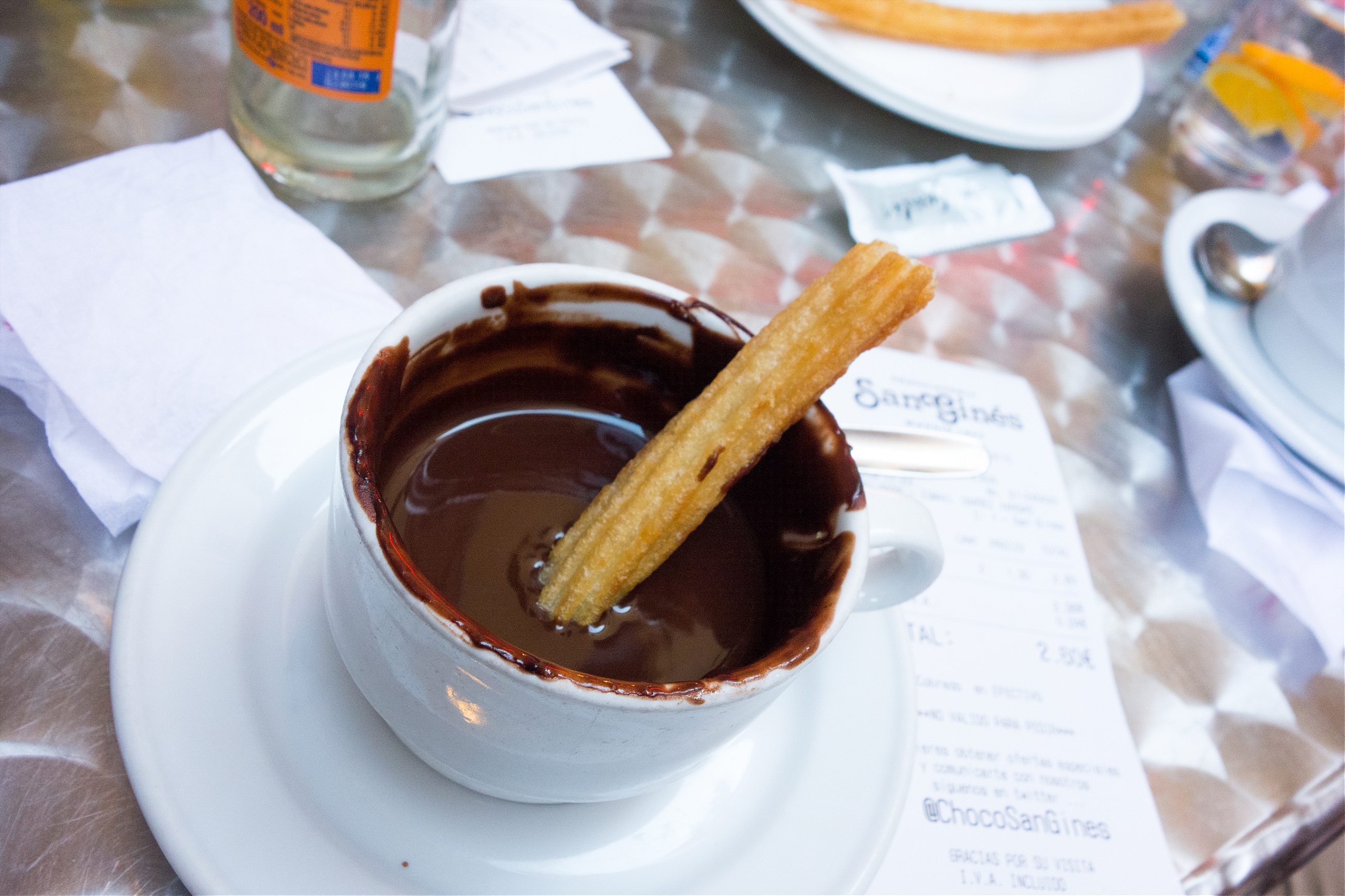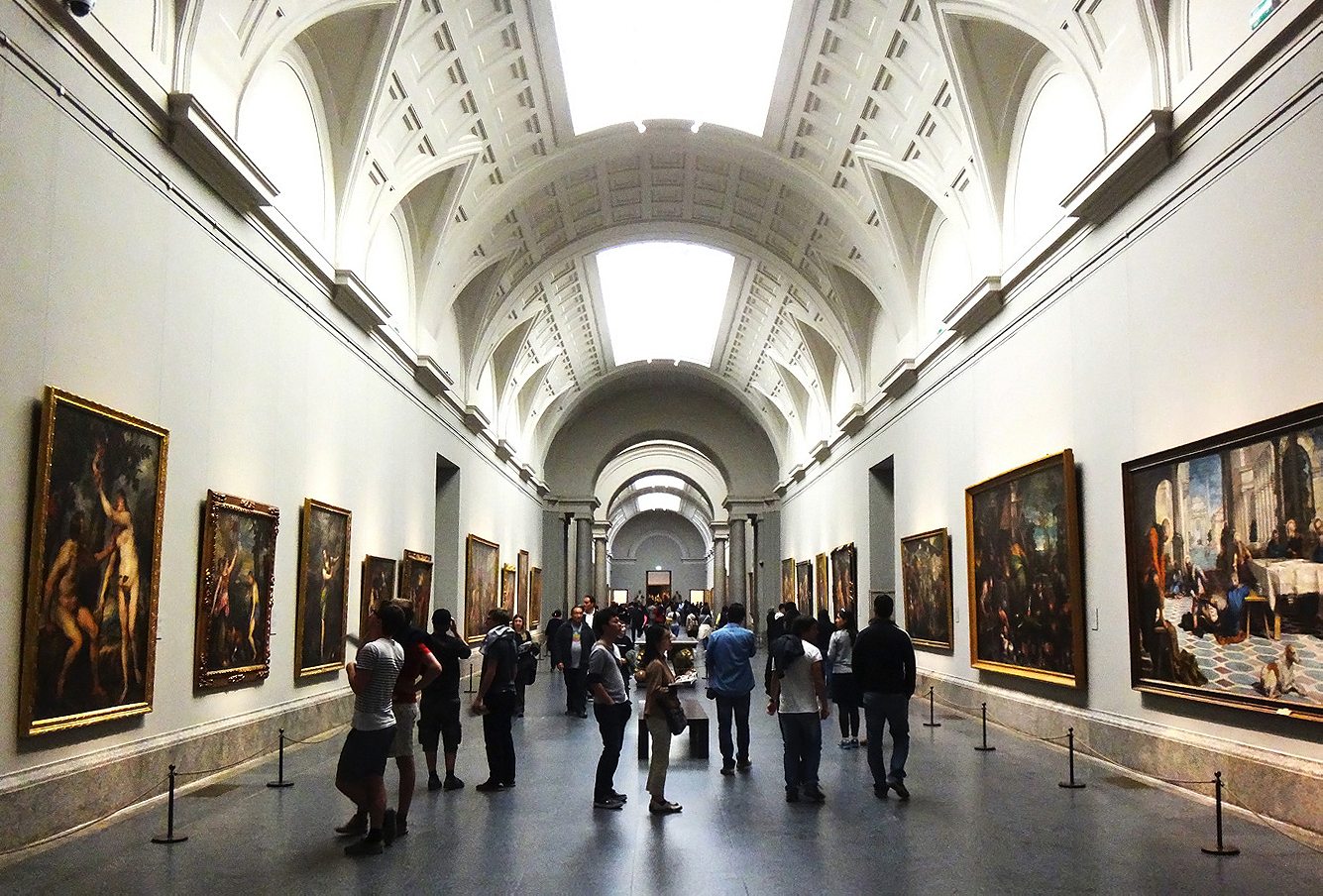Spain’s capital is a bastion of iconic institutions and old-school cool.

Find your center. Madrid became Spain’s de facto capital in 1561, when Philip II, eager to consolidate the fractious, barely unified kingdom he inherited from his dad, chose a location for his court that was smack dab in the middle of the country (you can see the plaque marking the physical center of the country in the Puerta del Sol). Over time, the centralizing grew as political as it was geographical. These days, ‘Madrid’ is shorthand for the Spanish government, especially as it opposes the efforts of regions like Catalonia and the Basque Country to gain greater autonomy or even full independence. This is true on a cultural level as well: for 40 years, the Franco dictatorship imposed its Madrid-based version of “Spanish” culture on the rest of the nation, a tactic that has had lasting effects.

Look beyond Spanish clichés. After almost two decades of immigration, Madrid is a much more diverse place than it once was, and over 11 percent of the population is not Spanish-born. That means you can now eat decent Chinese food in a makeshift restaurant underneath the Plaza de España, join Ecuadoreans in raucous outdoor picnics on Sundays in the Casa de Campo, dance to Senegalese hiphop at the Kilimanjaro nightclub, or attend the largest mosque in Europe.


Talk about food. Almost everyone else is. Listen in on the conversations of the madrileños around you, and you’ll realize that 70-80 percent are about who ate what for dinner last night, and what they will eat tonight. There are discussions of which granja cures the best ham; arguments over whether or not to add cumin to the gazpacho; discourses on the ideal degree of runniness in a tortilla de patata, the iconic dish of potatoes and eggs. These are a madrileño’s “How ‘bout them Mets?” Need a conversation opener? Start with an analysis of the cocido—the meat-and-chickpea stew that is one of Madrid’s few contributions to Spanish cuisine—you ate for lunch yesterday.

Tapear. Luckily, local eating customs makes it easy to do a lot of food research in a short period of time. Tapas may not have been born in Madrid (urban legend points to a fly-ridden bar in Cadiz), but they have reached their apotheosis there, with something like a total of 15,000 bars, or one for every 400 inhabitants. And every single one of those 15,000 serves snacks that can be as simple as an almond-stuffed olive or as complicated as a spider-crab-and-goat-cheese tatin. Good tapas bars can be found at all ends of spectrum, from the upscale Albora, to hip newcomer Angelita, to the diviest of dives, Cervecería Cruz. But none of them, it must be emphasized, are the “small plate concepts” you’ve experienced in Boston or Minneapolis. To properly tapear requires moving from place to place: sidle up to the bar, order a snack and a small glass of wine or beer, consume while standing, then move on to the next place. Rinse, repeat.


Stick to the classics. There is no shortage of hot, new cocktail bars pouring cleverly-named drinks made from craft gin and juniper syrup (see: Macera Taller). But considering that Madrid does old-school better than anyplace else, it’s worth getting a martini from the jacketed waiters at (not-what-you-think it is) Bar Cock, or a perfect gin fizz at neighboring Del Diego, or a small glass of sherry at La Venencia, a tiny hole in the wall so out of touch they don’t even allow selfies.

Be prepared for a long night. Even for a country of night owls, madrileños keep late hours. Dinner doesn’t really get going until 10 p.m., no one would think of going to a club before 2 a.m, and the line for churros at San Gines—the perfect alcohol-absorbing food—gets really long at 5 a.m. There are traffic jams at 7 a.m. on a Sunday morning, and they are definitely not caused by people going to church. The days of the siesta are numbered in most corners of the country, but if it is still hanging on here in the 21st century, it’s at least in part because how the hell else are you going to get through the day?


Skip the Rastro. Every guidebook since the beginning of guidebooks tells tourists to spend their Sunday mornings at the flea market that stretches from the La Latina metro stop down to Puerta de Toledo. But almost everything for sale on the street, from the bongs to the polyester bras, is junk, and pushing through the hordes of people as they sift through rubber piping and racks of gauzy skirts imported from India is a drag. Instead, come on a weekday when there is no flea market to impede access to the wonderful antique shops, stocked with everything from colonial furniture to Francoist postcards, that line the neighborhood.

The One-A-Day Rule is your friend. In the Prado, the Thyssen Bornemisza, and the Reina Sofia, Madrid has three of the world’s great art museums, and they’re all within less than a mile of each other, so close together that they get promoted as “The Golden Triangle.” But do not be deceived: the angles of that triangle are big. So big, and so packed with treasures, that trying to get through more than one in a single day is a recipe for blurred vision, crankiness, and other symptoms of artistic overload. Spread it out, or better yet, choose a tiny jewel like the San Antonio de Florida hermitage whose ceilings are lined with delightful Goya frescoes.

Take it to the river. Madrid is not the greenest city in the world. With the exception of the Retiro—a central expanse of rose gardens, tree-lined walkways, and a murky lake made for paddling—and the massive Casa de Campo, a former royal hunting estate, it has few parks and fewer trees. Which is why the Madrid Rio project, inaugurated in 2011, is so welcome. Running about five miles along the Manzanares River, it includes gardens, leafy walking and bike trails, playgrounds, pools, and fountains.


The bullfight is dead. Long live the bullfight. Attendance at bullfights has been declining for decades, and towns and entire regions like Catalonia have banned it. But citing “national patrimony” (while taking another jab at Catalan autonomy, see #1 above), the Spanish parliament recently ruled it illegal to make bullfighting illegal. And whether you consider it art, sport, or a particularly barbaric form of animal cruelty, Madrid’s Las Ventas bullring is still the place to see it. Up-and-coming toreros dream of fighting there the way that a Midwestern girl with a big voice and a strong high kick dreams of Broadway.

Shop beyond Zara. In a city awash in Mangos, Topshops, and the Spanish-born Zara, it can be hard to find artisans producing high-quality, hand-crafted local wares. But they’re there: Seseña, for the wide, heavy wool capes that no gentleman would once be without; Botaría Anguila for hand-stitched wineskins; and Casa Hernanz for the rope-soled espadrilles that everyone refreshes each summer (you can tell it’s the season by the line outside). And for those dreaming of seeing their own name on the billboard at Las Ventas, there’s Justo Algaba, who has been custom-sewing the tight-fitting, sparkly bullfighter’s suit known as a traje de luces since 1978.


Think twice before you Uber. Taxis in Madrid are cheap, clean, and remarkably plentiful; you can find one almost anywhere, and at any time of day or night. But the best thing about them are the drivers, a proud, noble bunch who own their own cabs, have been at it forever, and are fonts of local knowledge (and wisdom). They scorn their GPS’s and can hold forth as easily on American foreign policy as they can on Real Madrid’s latest trade. The sharing economy can’t hold a candle to them.

Or better yet, walk. The paseo is the great madrileño past time. To do it properly, grab a friend or two on a Sunday afternoon, and stroll the winding streets of the La Latina neighborhood or the broad boulevards of Salamanca. Stave off starvation and thirst with occasional stops for a vermouth or a tiny caña of frosty beer, and, of course, a tapa or two.
Top image: Katrina Cole